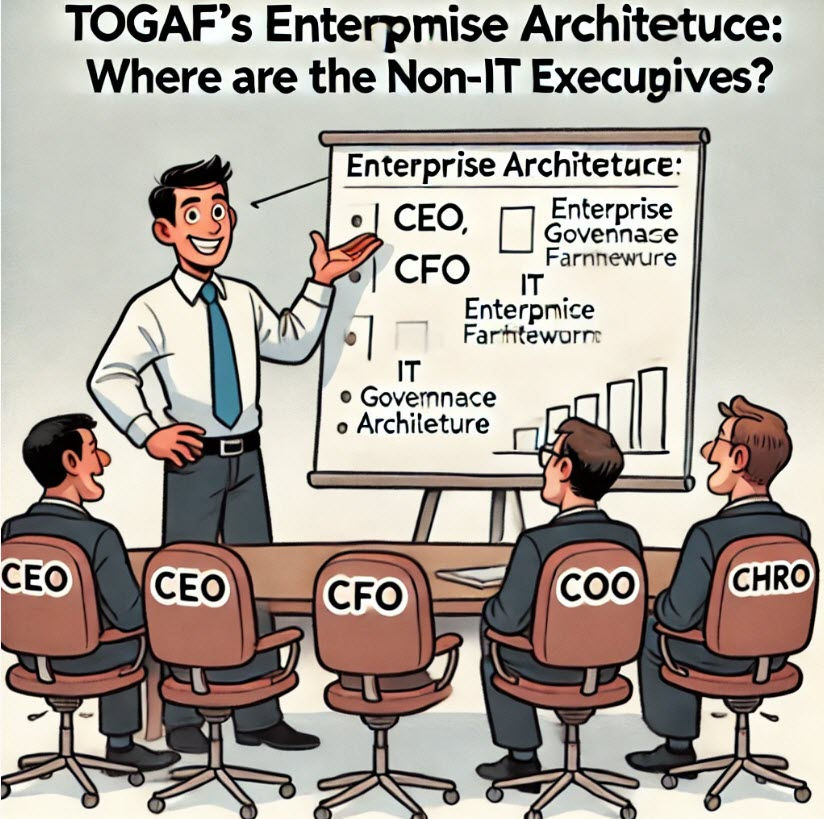If TOGAF is Truly Enterprise-Wide, Where Are the Non-IT Executives?
- Sunil Dutt Jha

- Mar 10
- 2 min read
Updated: Mar 16
Enterprise Architecture (EA) should be the foundation upon which enterprises build their strategic decisions and operational frameworks. Yet, a simple question reveals a critical flaw in TOGAF: If it truly represents enterprise-wide architecture, why do we rarely—if ever—see CFOs, COOs, CHROs, or other non-IT executives actively involved?

1. The Missing Voices: CFOs, COOs, CHROs
Consider these scenarios:
How many CFOs reference TOGAF for financial planning, risk assessment, or investment decisions? Virtually none.
How many COOs utilize TOGAF for operational optimization, logistics planning, or supply chain management? Again, practically none.
How many CHROs rely on TOGAF to shape workforce strategy or talent management? Absolutely none.
This silence from non-IT executives reveals something crucial: despite its claims, TOGAF is not genuinely enterprise-wide. It remains deeply rooted in IT-centric thinking, disconnected from genuine enterprise leadership.
Remember clearly: Real enterprise architecture must engage and influence all senior executives—not just CIOs.
2. Why TOGAF Fails to Engage Non-IT Executives
TOGAF's fundamental flaw is its IT-first approach:
It places IT governance and system integration above strategic business concerns.
Its terminology, methods, and frameworks are crafted specifically for IT specialists, alienating executives responsible for core business functions.
TOGAF-certified architects often lack influence outside of IT departments because their frameworks do not genuinely address core business concerns—strategy, profitability, customer experience, workforce optimization.
Remember clearly: A genuinely enterprise-wide framework speaks clearly to all key executives, not just the CIO.
3. Real-World Impact: Strategic Decisions Without TOGAF
In the real business world, strategic and operational decisions happen continuously, shaping enterprises profoundly:
CFOs plan mergers, acquisitions, and financial structuring.
COOs manage global supply chains, logistics, and operational excellence.
CHROs guide talent management, workforce strategies, and organizational culture.
Want to read more?
Subscribe to architecturerating.com to keep reading this exclusive post.




